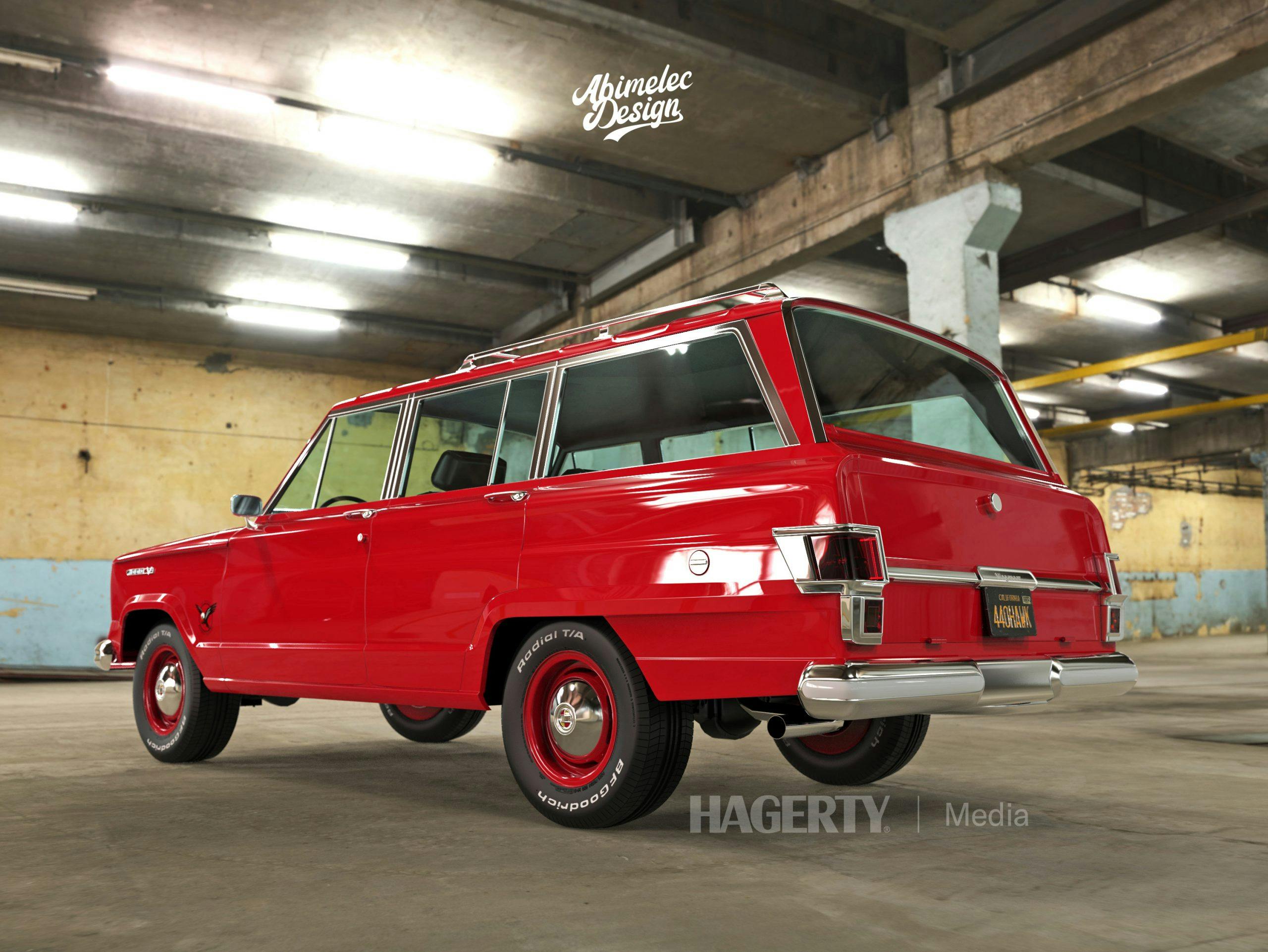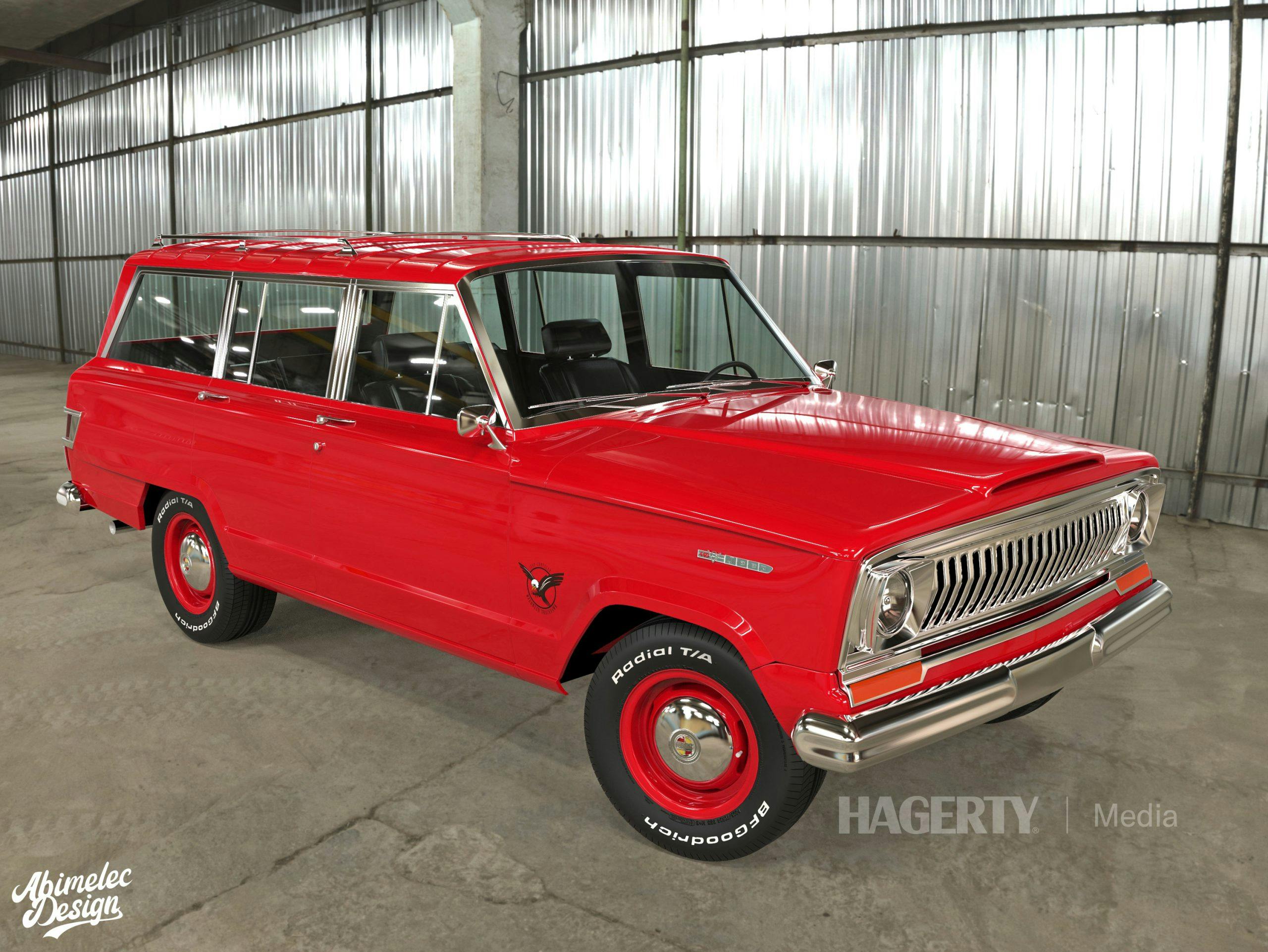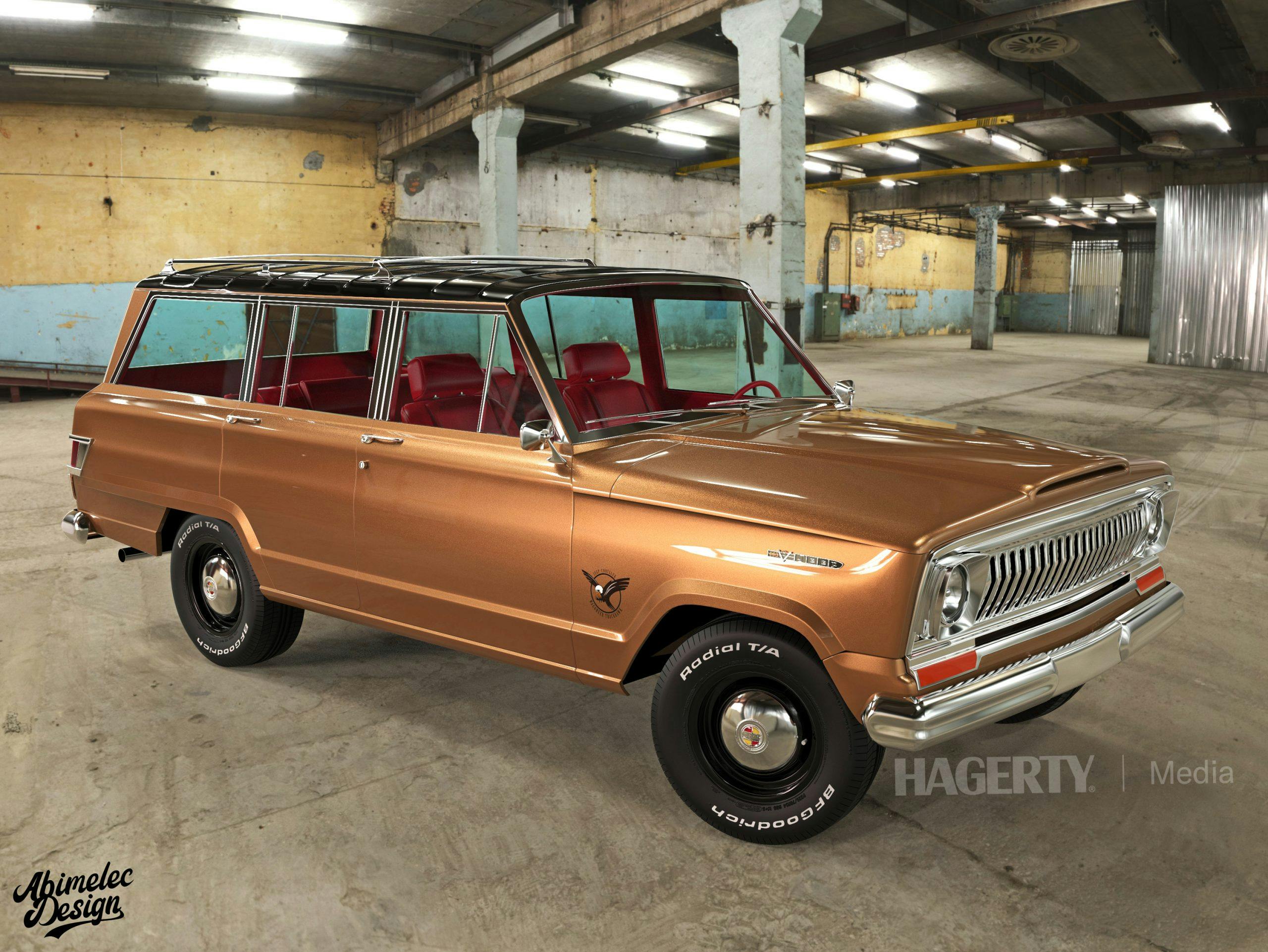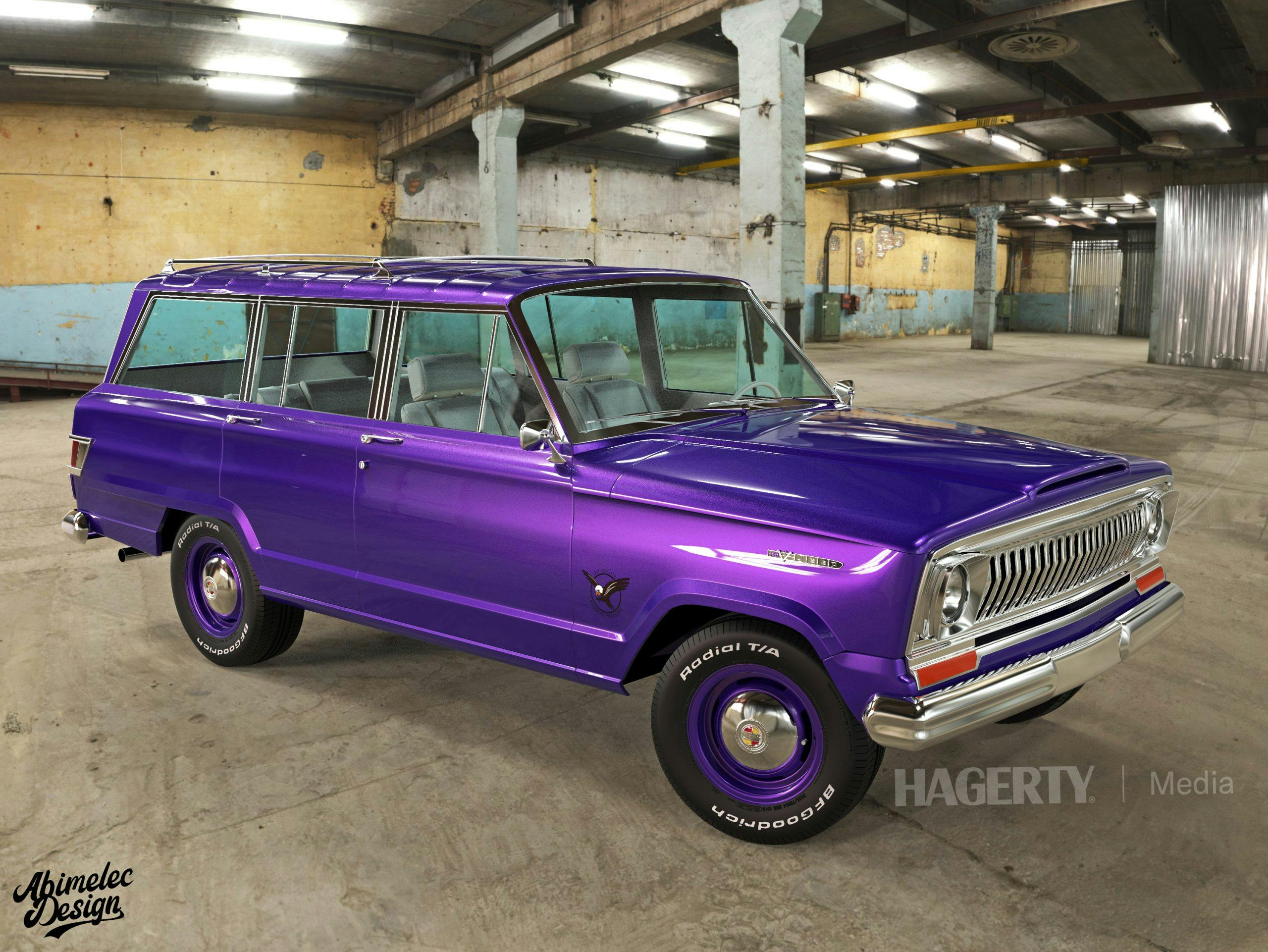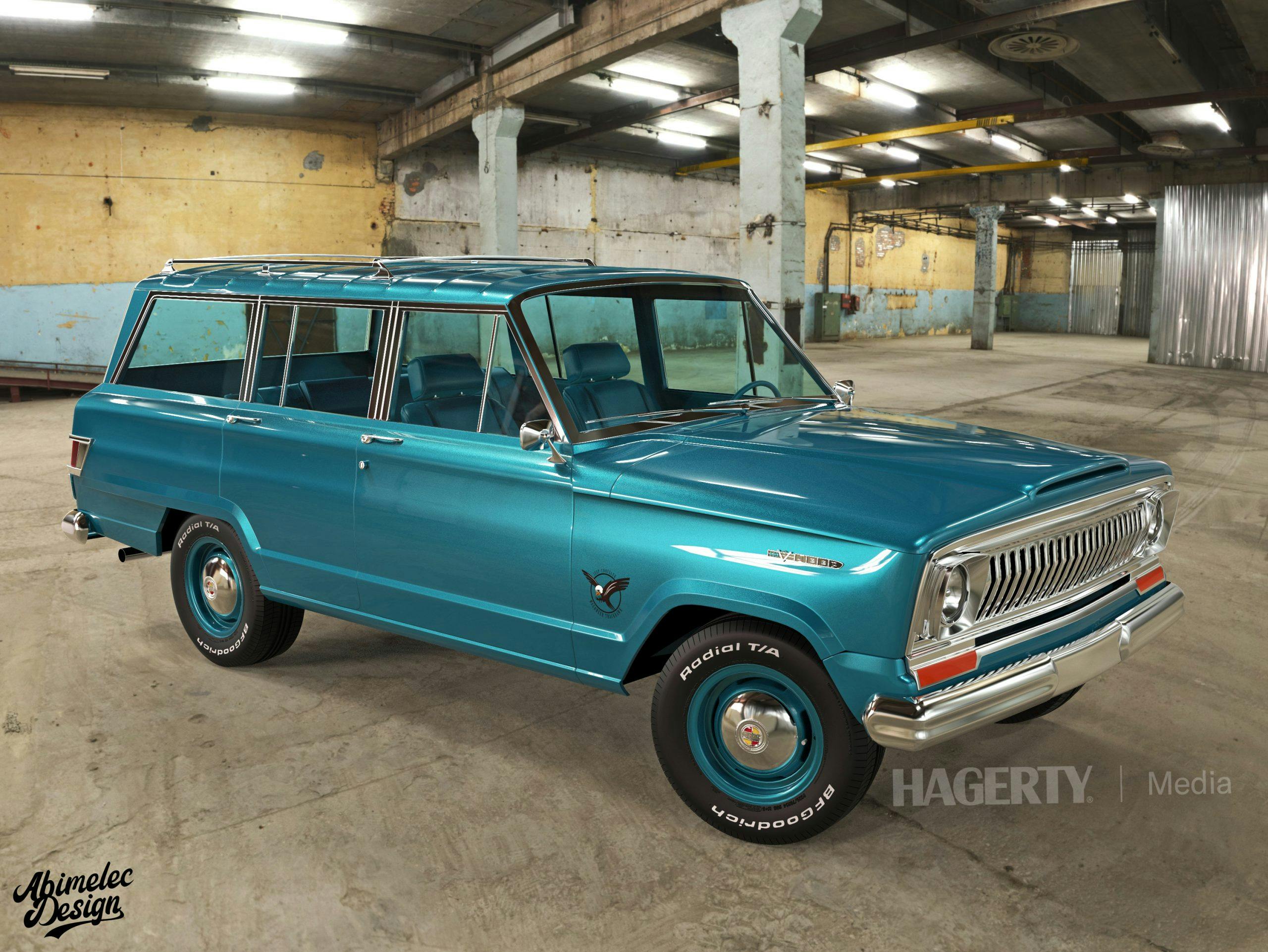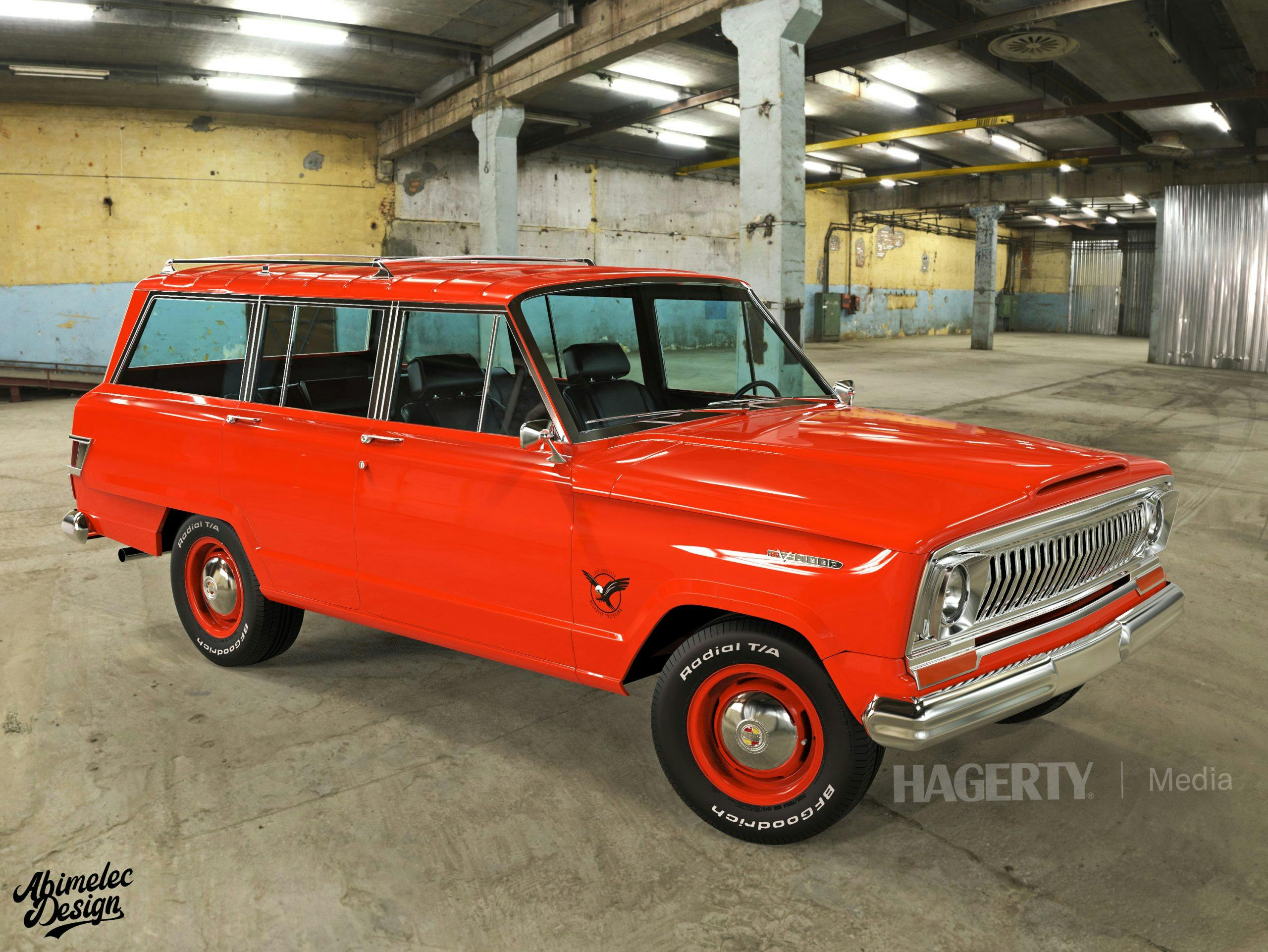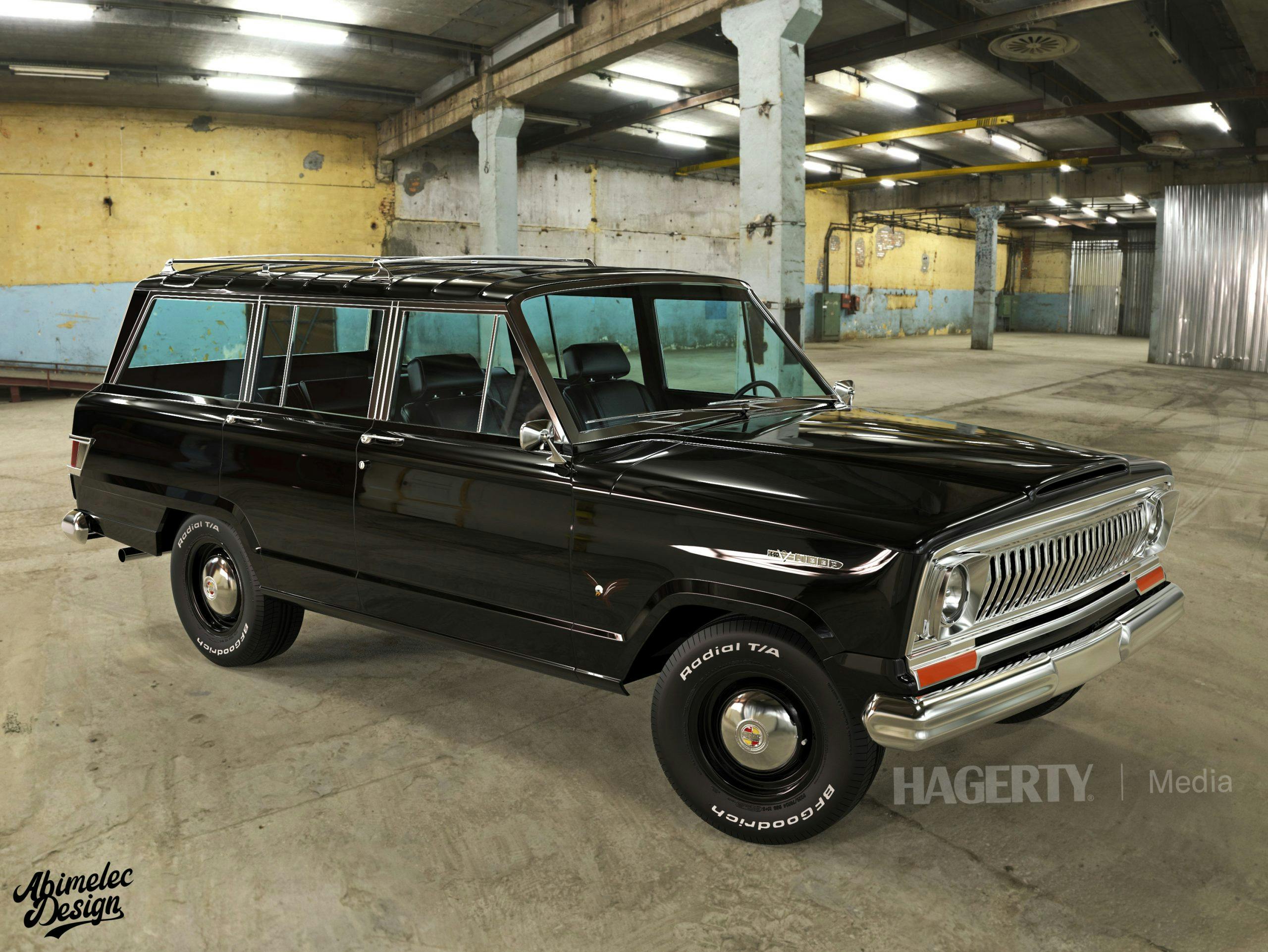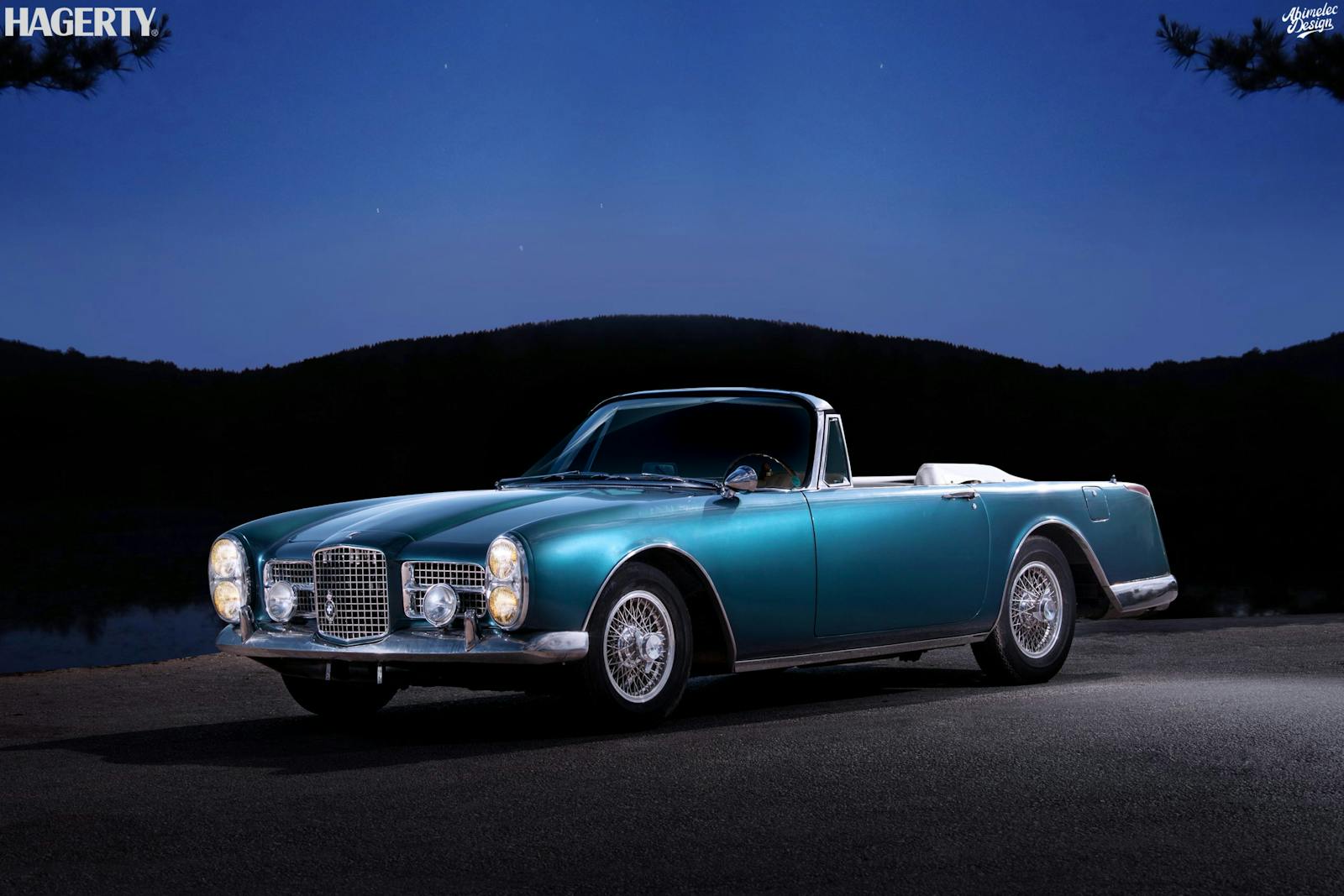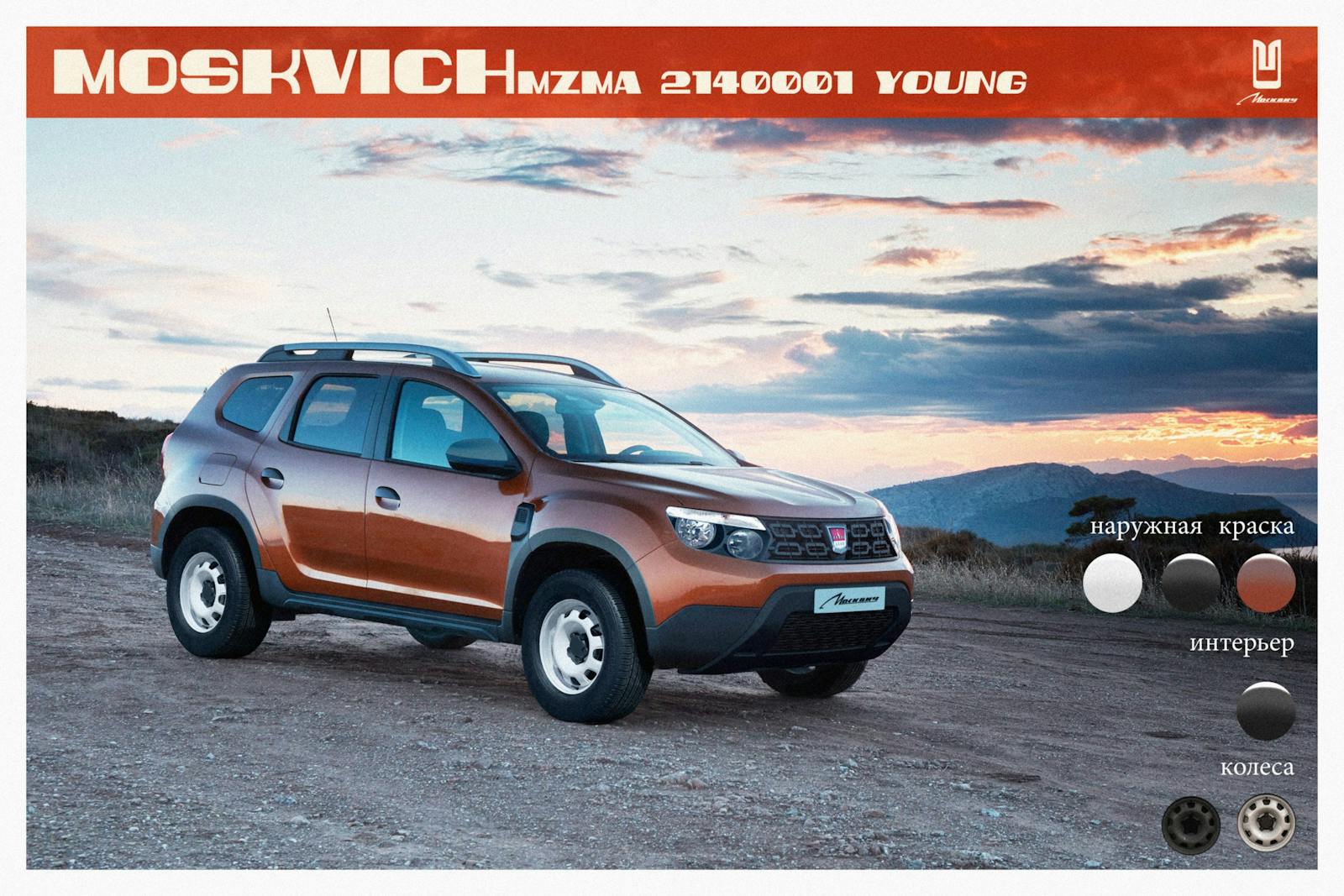What If? 1973 Jeep Wagoneer Trackhawk

Welcome to What If, a new feature from imaginative illustrator Abimelec Arellano and Hagerty. We’ll be taking you back in time—and possibly forward into the future—to meet alternative-universe automobiles. Even better, our time machine is working well enough to bring “short take” reviews along with the photographs and advertisements. Buckle up and enjoy the ride! — Jack Baruth
(Originally published in the “Yucky Car Stuff” column of Wall Street Enquirer, February 23, 1973, written by Neil Daniels)
Who can forget that timeless moment in Greek mythology where Jupiter turned Narcissus into a swan? Well, if you are well-educated enough to know what I’m talking about, you probably aren’t very interested in cars and just like me you would rather spend your time at the erotic spiral toilet of the Guggenheim, designed by the mighty I.M. Pei, checking out that blow-your-mind cubist stuff by Camille Pissarro.
Surely, however, your ocular portals have absorbed the two-page, center-spread advertisement in this very publication, just last Tuesday, featuring Chrysler Corp. chairman Lynn Townsend and AMC head honcho Roy Chapin Jr. “He looked across the country, saw an opportunity, and picked up the phone,” it states, below Townsend’s leonine (meaning lion-like) countenance (meaning face). On the other side of the ad, below Chapin Jr.’s aquiline (meaning eagle-like) visage (meaning face), it reads, “He knew there was a change coming… and he picked up the phone.” The resulting surprise merger of the two firms was a bigger surprise that what Commodus did to Lucretia—and the first evanescence (meaning fleeting appearance) of the felicitous (meaning happy) juxtaposition (meaning putting two things together) has landed like a veritable zeus ex machine on the tender palates of the American redneck.
Prior to the Chrysler acquisition, which is being called a “merger of equals” by the PR teams, AMC made most of its pin money selling ancient trucks under its Jeep marque (meaning brand). Having bet the house on some externally-developed electric cars then failing in the attempt, something that surely no manufacturer will ever be so foolish as to attempt in the future, American Motors desperately needed some new investment so its factories could make different cars. You see, it’s recently come to my attention that many factories can only make a certain kind of car, which seems ridiculous because making cars is a pretty simple bolts-and-nuts thing and not in any way as complicated as, say, merging pop culture and less-than-obscure classical references in a single tasty weekly column. Why not just stop making the one car and start making the other? Aren’t they all made out of the same base elements, namely earth, wind, and fire?

Merging with Chrysler will mean that these old Wagoneer production “lines” can be revised to build modern-as-tomorrow vehicles like the upcoming “Omni” and “Horizon”, which is a good thing because trucks are ugly and they are driven by people without the faintest scintilla (which means… uh…) of a classical education. In the meantime, however, Chrysler has donated some production materials to AMC, resulting in the “Wagoneer Trackhawk.”
This so-called “Trackhawk,” which as the recent skimmer of a bird-related book I can assure you is not the actual nomenclature (meaning name) of an extant (meaning existing) raptor (meaning bird), is just the old ugly Wagoneer with the 440-inchish-cubed V-8 from the Dodge Charger. It features a logo with a suspiciously eagle-looking bird. (After reading another book, I can in fact confirm that the eagle is a real bird, although it doesn’t appear anywhere real people live, such as Chelsea, or Miami Beach.) Dodge claims 390 horsepower for the Trackhawk; although this engine in the Charger produces 280 horsepower, I am told that there are different standards for truck and car emissions, and that the Trackhawk is actually registered as a farm vehicle. Why would you need a vehicle on a farm? There’s no valet parking.
Unfortunately, this vehicle will find its way into the hands of too many suburban moms and dads who will use it as a short-range commuter and mall runner, tasks for which it is excessive. Even setting aside fuel economy (8/13 miles per gallon city/highway, according to the EPA), there is the Armada’s, I mean, the Trackhawk’s, sheer unfriendly bulk. You need the ground crew from Lakehurst, New Jersey, to park this thing. And every mall parking deck threatens to skim the roof racks right off it. The center of the Armada’s, er, the Trackhawk’s headlamps is approximately 38 inches from the ground, which puts them at a perfect height to fuse the retinas of drivers ahead of you.
Given the chance to drive a manual-transmission-equipped version of the Trackhawk around Central Park, we eagerly accepted a chance to simulate proletariat chic for an afternoon. After receiving a terse instruction from a man named Buster on how to operate a clutch pedal, we prepared to fly through traffic like Hephaestus flying too close to the sun—but the accidental slippage of our left foot off the clutch pedal, combined with a surprised stab to the right throttle pedal, caused our “Trackhawk” to launch itself through Central Park, across several open fields, up and down a rock feature, and head-first into a patisserie (meaning bakery).
No civilized person—and I mean the sort of people who know, or have recently been taught, which fork to use—would own or operate such a beast. But it will probably play well in Utah.
